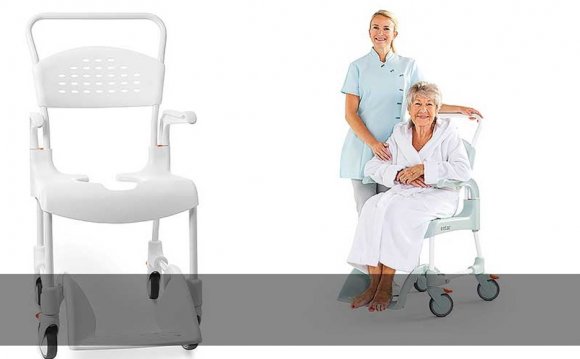
Disability equipment For elderly
If you utilize a wheelchair or walker, you are already aware exactly how tough action is without their particular support.
As you start searching for a mobility help, consider carefully your particular flexibility demands, size and just how you want to utilize it.
Then, evaluate and "test drive" a number of designs and compare the level of convenience, function and functions that the various mobility aids provide.
The following information is built to provide a summary of your alternatives which help serve as a kick off point inside decision-making process.
Some mobility aids that may help you maintain your freedom consist of: * Wheelchairs - rigid and collapsible* Powerchairs - These very maneuverable and versatile machines are good options to electric wheelchairs. Some swivel or have chair lift options. These disabled transportation aids were created for everyone with serious movement constraints.
* Walkers - These come with or without rims and generally are helpful if you're not restricted to a wheelchair. Many fold for easy storage. Some come designed with a seat or pouches. Others satisfy baskets, trays, or totes.
* Walking sticks or canes. These can be manufactured of solid wood or folding aluminum and are available in sizes to suit all heights. Ensure that the walking-stick has a rubber tip to prevent sliding.
Smaller aids and equipment that might help you feature light-weight and portable power raise cushions, which work like a good start recliner. Additionally there are key turners with handles to help open doors and what to help with gardening or driving.
Mobility chairs fall into three main categories: (1) Manual push wheelchairs, (2) driven or electric wheelchairs, and (3) Motorized scooters. Following is a listing of every type.
The most frequent form of handbook wheelchair is made for hefty use with powerful metal construction and enormous rear tires so that it could be self-propelled. This standard design usually weighs in at a lot more than 30 pounds and will support as much as 250 weight. Seat widths vary from 16 inches to 22 inches.
Heavy-duty designs are offered for those that weigh-in overabundance 250 weight and need a seat as much as 30 ins broad. There's also a lighter version of the conventional mode this is certainly more transportable yet not as durable for longer usage. Companion or transport wheelchairs tend to be another handbook choice to give consideration to. They truly are quickly held, collapsed and stored in automobiles for regular excursions. They weigh significantly less (around 15 to 20 weight) whilst still being be capable of carry around 250 pounds of fat. These designs are designed with tiny rear wheels and cannot be self-propelled so an individual must depend on a companion (for this reason title) to press him or her. You can purchase models that recline and those for bath and restroom use.
Do you previously observe that you won't ever see handicapped athletes contending in folding wheelchairs? The reason is increased overall performance of rigid wheelchairs. All professional athletes seek to enhance overall performance. But performance isn't just essential for activities wheelchairs, it's important for energetic every day users and.
a well-designed rigid wheelchair becomes the main human anatomy of a disabled individual permitting easier access and freedom of movement. Exactly what are the features of a rigid wheelchair that provide superior overall performance?
•Reduced repair and body weight: Folding chairs have actually many movable components that undergo strain. These parts must often be regularly adjusted or changed maintain the seat in alignment. Because of this stress, thicker walled aluminum is necessary and therefore the wheelchairs usually are heavy. Rigid wheelchairs have less movable parts and less things to fail. These are typically generally stronger and age much better than folding wheelchairs.* most of the power from push regarding the wheels is lost in flexing areas of the folding wheelchair. Because the rigid seat has actually fewer movable components, almost all of the energy from push regarding the rims is converted into ahead motion. Simply speaking, the rigid wheelchair can be easier to press than a folding wheelchair.
•Due into the need certainly to fold, the foldable wheelchair design might not be optimized for overall performance. For instance, the casters associated with the foldable wheelchair are usually placed well behind the foot-rest, so that you can let the wheelchair to close properly. This design sets most weight from the casters. Because of the rigid wheelchair, the length involving the footrest and casters is generally much shorter; placing a lot more of the weight from the back rims. Less body weight on casters makes the rigid wheelchair more straightforward to switch.
•Because rigid wheelchairs tend to be less heavy and much more maneuverable than folding chairs they, perform much better, that's, they're much easier the individual to maneuver in. But this is simply not a bonus limited to professional athletes. Imagine a wheelchair user rising a wheelchair ramp without assistance. This is often more difficult in much folding seat, than in a maneuverable, ultra-light, and this can be less heavy by 10kg or even more.
•In summary, due to weight, design, and fewer going components, the performance of a rigid wheelchair is normally better than a folding wheelchair. This difference can become even more noticeable once the wheelchairs age.
Performance is only one of many benefits of a rigid wheelchair over foldable wheelchairs. Under is a partial a number of benefits of rigid over folding seats.













